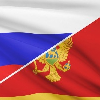Vizaran from Montenegro - combine business with pleasure
This is an automatic translation.
Click here to read the publication in the original language.
Vizaran from Montenegro: combine business with pleasure
A large number of Russians live in Montenegro for many reasons without having to issue an annual residence permit and every month travels to a neighboring country for the so-called "visa" (from the English visa run), which makes it possible to live unhindered in Montenegro for another 30 days.Beginners usually have questions about how to carry out this procedure technically and competently combine business with pleasure: in time to see the beauty of the neighboring state, and most importantly - where to go so that the costs are justified.
The most popular destinations are Bosnia, Albania, Croatia, Serbia and Italy. Consider all the pros and cons of these countries from the point of view of a new resident of Montenegro.
Bosnia, Trebinje
Do not worry that the "Republic of Srpska" is written on the index after the border is Bosnia's truth, not exactly Serbia, and you have arrived correctly. Usually this direction is used by the inhabitants of Herceg Novi, Kotor, Tivat and the entire Boka-Kotorsky Bay, since the distance to the border is very small. The main advantage of Bosnia is its proximity and visa-free entry for Russians at any time of the year. Unlike Croatia and Italy, they do not require either an open Schengen or their own visa, and they also do not cancel visa-free travel outside the season, like Albania.
The nearest to the border is the city of Trebinje. A charming, quiet, cozy place with beautiful streets and the Old Town, where you can have a great lunch. The local river Trebisnice is considered to be one of the largest in Europe.
In Bosnia, rather low prices for food and clothing, and many arrange shopping tours for Bosnian shops. Keep in mind that the euro there is an unofficial currency, but in some tourist areas it is accepted at a rate of 1 euro to 2 local brands.
Still it is impossible not to note the incredibly pure mountain air, which is filled with the valley between the border and Trebinje. At least for the sake of it is worth it to visit.
What to see: The Old Town, the center, the Trebishnica River.
Albania, Shkoder
Every summer, for Russians, it is possible to visit the country without a visa, and in the rest of the time it is necessary to have an open Schengen or Albanian visa. On weekends, there is a risk of staying at the border for several hours: many go for food and cheap clothes to Shkoder, which is only 13 km from Montenegro.
Shkodra is a large city, as if frozen in the 80s of the last century, with unobtrusive oriental colors, because of the ordinary five-story buildings, looking a little untidy and gloomy. Many cyclists and chaos on the roads will not let you relax if you're driving.
If your goal is a visa and purchase of inexpensive products, then you can go to the supermarket one kilometer from the border and return back. By the way, a small lifhak: if there is a queue of cars on the checkpoint, you can walk 10 minutes on foot, leaving the car in the parking lot.
The prices in Shkoder look tempting, but the main thing, why everyone comes here is Chinese condensed milk "Panda" - the visiting card of the country for our compatriots, who miss the condensed milk. The price is 250 leks. Local currency rate: 1 euro to 140 leks approximately and in most shops you can pay the euro, but be prepared that you can not take a trifle or give you change in leks - the euro is not officially in the process, so all financial manipulations with the euro - a personal matter for every shopkeeper or shop owner.
What to see: the fortress of Rosafa, a pedestrian mall in the center.
Serbia, Belgrade
It should be noted that this is the most remote border from the seaside cities of Montenegro, and all the way to Belgrade by car takes an average of 10 hours. You can recommend a visa to Serbia only if you really want to see the sights, because it's very expensive and time consuming to go here only for the sake of a stamp in your passport.
Two cities that are worth visiting, being in Serbia are Belgrade and Novi Sad. For one day you will not be able to do it exactly, so it makes sense to plan a trip at least for the whole weekend.Belgrade after the cities of Montenegro seems huge. Wide roads with dedicated lanes for public transport, unimaginable interchanges and bridges all cause admiration for a person who has lived at least a couple of months in Chelug or Markovici. Here you will find major shopping centers with famous brands, and networks of popular fast food, and good, fairly inexpensive restaurants, and free parking right in the center, and many more.
The currency is the Serbian dinar, its rate to the euro is about 120: 1. In all shopping centers there are exchangers, also they are on the main streets and are called "mensters". Many buildings still store traces of war: chipped and exfoliated plaster.
Prices for food and clothing are roughly equal to Montenegrin.
The main attraction of Belgrade is the Kalemegdan fortress, which offers a stunning view of the city and the confluence of the Sava with the Danube, but wide pedestrian streets in the center with numerous cafes also deserve attention. The only disappointment is the local zoo. If you were in other European zoos, this will leave a depressing feeling of pity for animals, and he himself is very small in size - you can go around without hurrying in 20 minutes.
What to see: the fortress Kalemegdan, the place of the confluence of the Sava with the Danube, the embankment.
Croatia, Dubrovnik
The nearest town to Croatia is Dubrovnik. A beautiful place on the coast with a huge fortress, where, as they say, they shot several episodes of the "Game of Thrones".A Croatian visa or an open Schengen visa is required (under the open it means that you have already entered it to the EU, and you have a confirmatory stamp). For your efforts you get a full-fledged European city with a beautiful embankment, narrow streets, free paid parking lots and a very, very, very beautiful fortress wall where, despite its status as a cultural and historical site, people still live and even have a school!
On the border, they can pickingly inspect the car and check the documents, both from Montenegro and from Croatia. Perhaps this is how we got so unsuccessfully, or maybe it's a regularity, so in any case, it's better to have the entire package of documents and do not expect "at random".
Prices are slightly higher than Montenegrin, euros are not accepted everywhere, but in cafes and restaurants you can pay. But everywhere accepting bank cards - with this there are no problems.
What to see: fortress walls, if you have time - walk along the embankment.
Italy, Bari
If you have a Schengen visa, then I highly recommend to visit Italy by ferry from Bar. One night on the road - and you're in beautiful old Bari. A city with a centuries-old history, which definitely deserves to be seen. But still, Bari is usually the starting point for traveling to Rome. If you plan a trip in advance, you can buy inexpensive tickets for the Bari-Rome train for about 20-30 euros, nevertheless, visa to Italy is still the most expensive ticket in this review, but you can justify it by inexpensive shopping.One of the advantages of crossing the border in the port of Bar is the almost complete indifference of the border guards to your person. Things are not being examined, the receipt for payment of the tourist fee is not checked - I will not say that this is always the case, but more often - just like that.
What to see: St. Basil's Basilica St. Nicholas Cathedral. Sabina, the whole center of the city.
Bogov Vladimir
#BogovVladimir
This is an automatic translation.
Click here to read the publication in the original language.






































